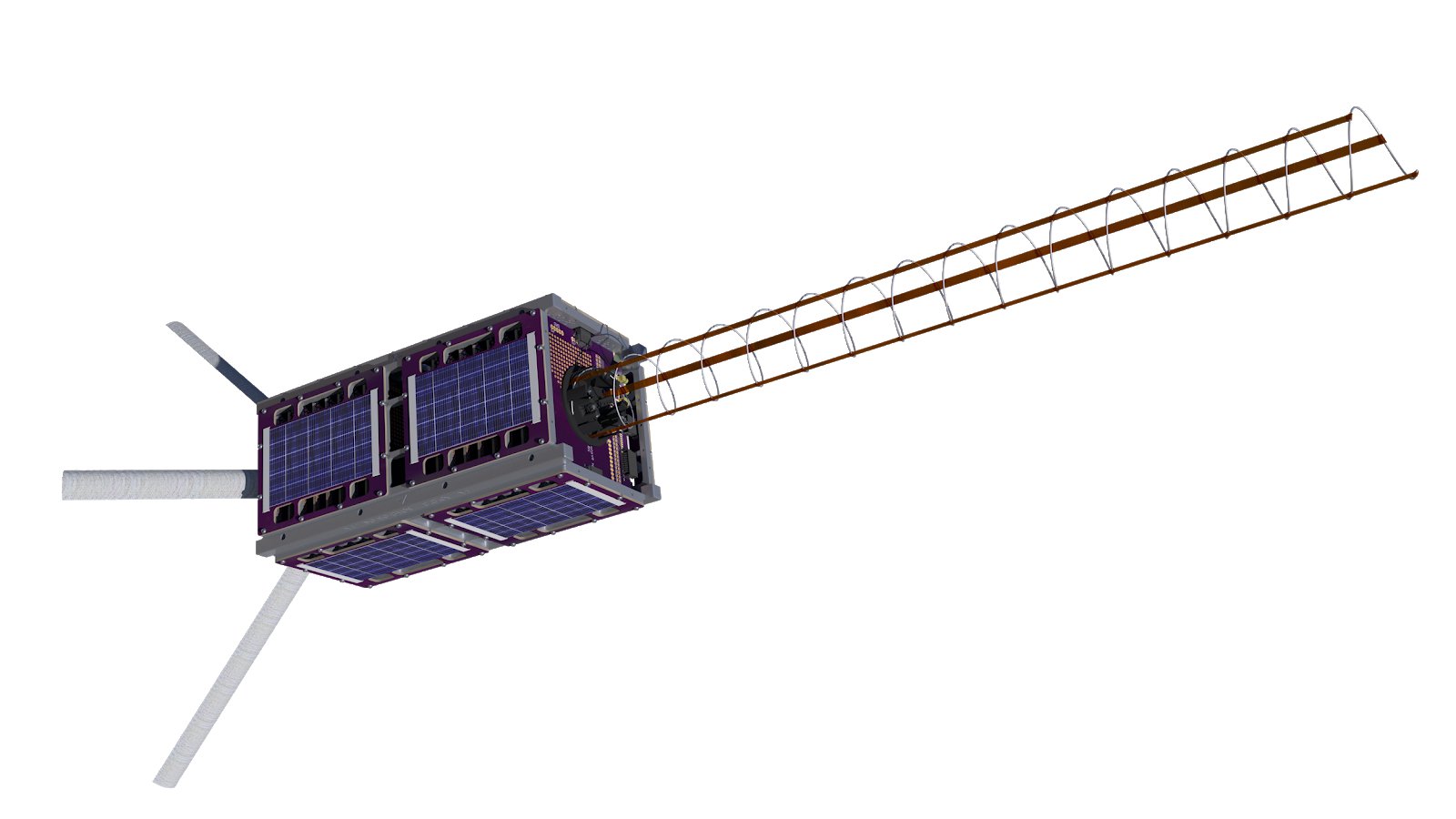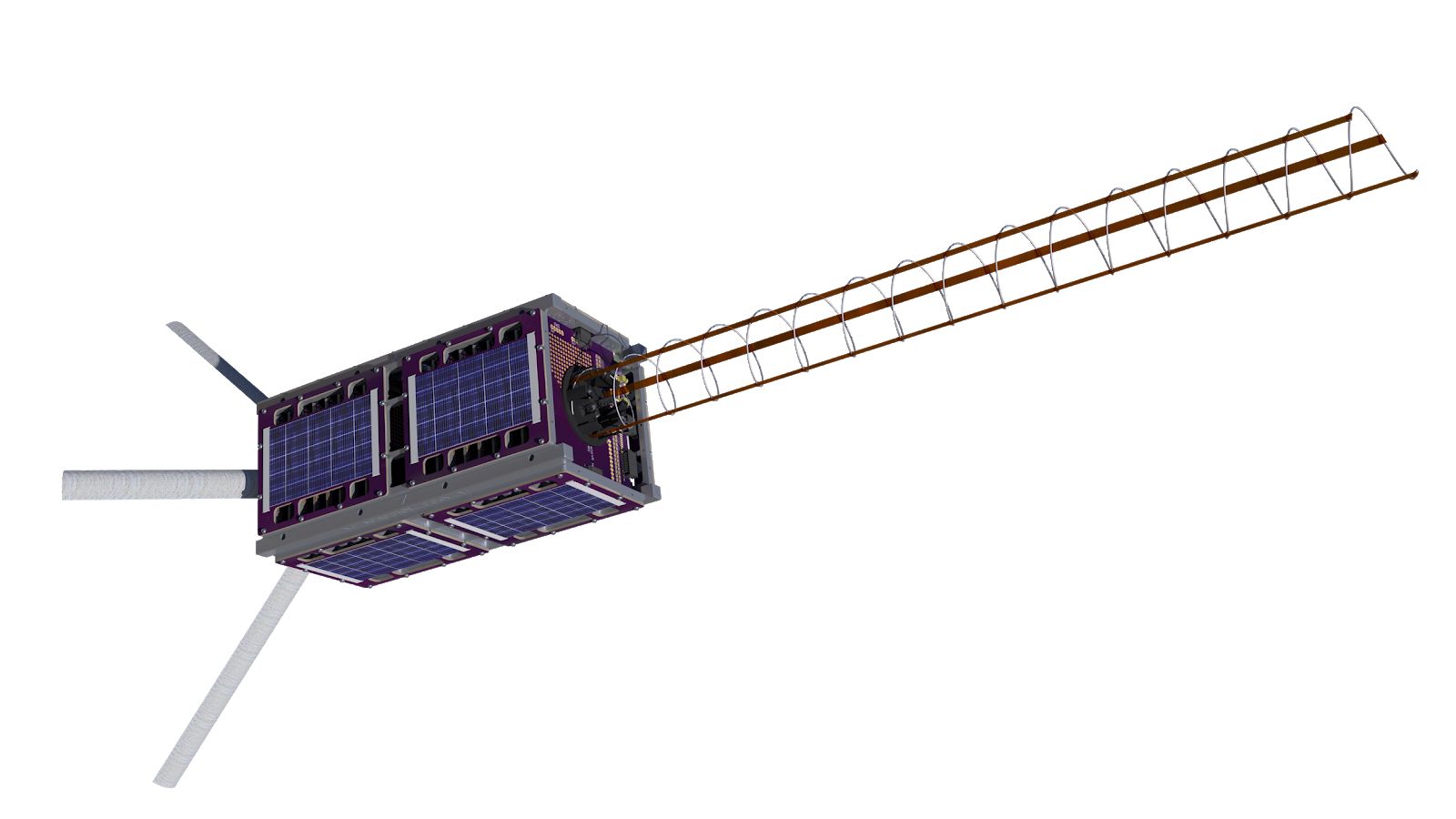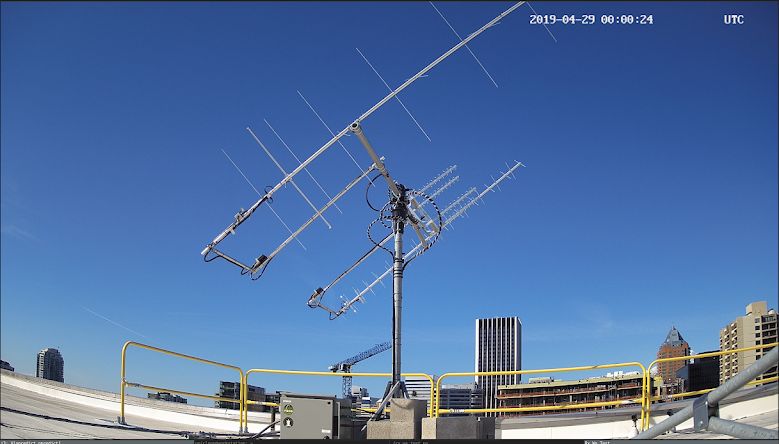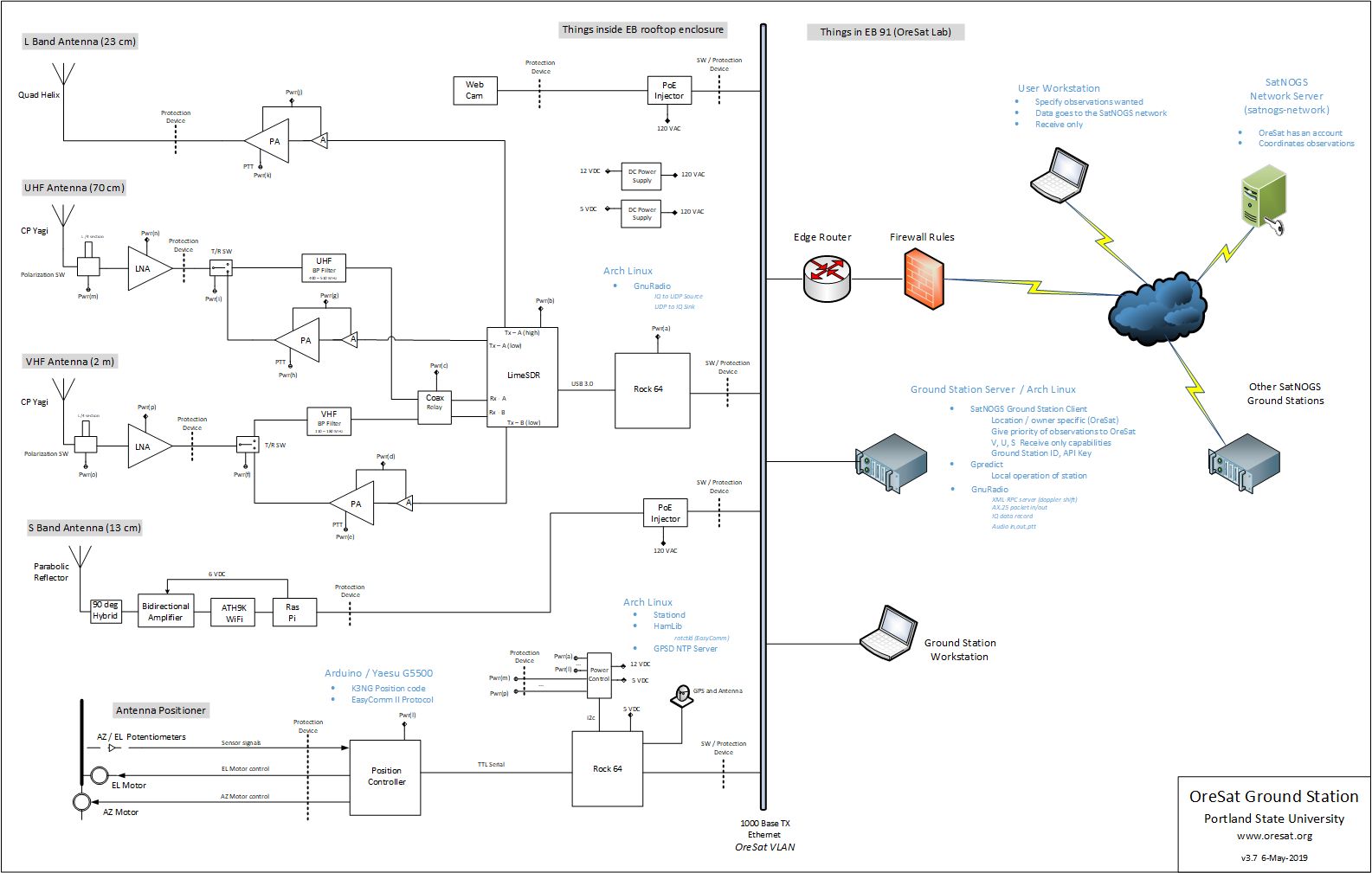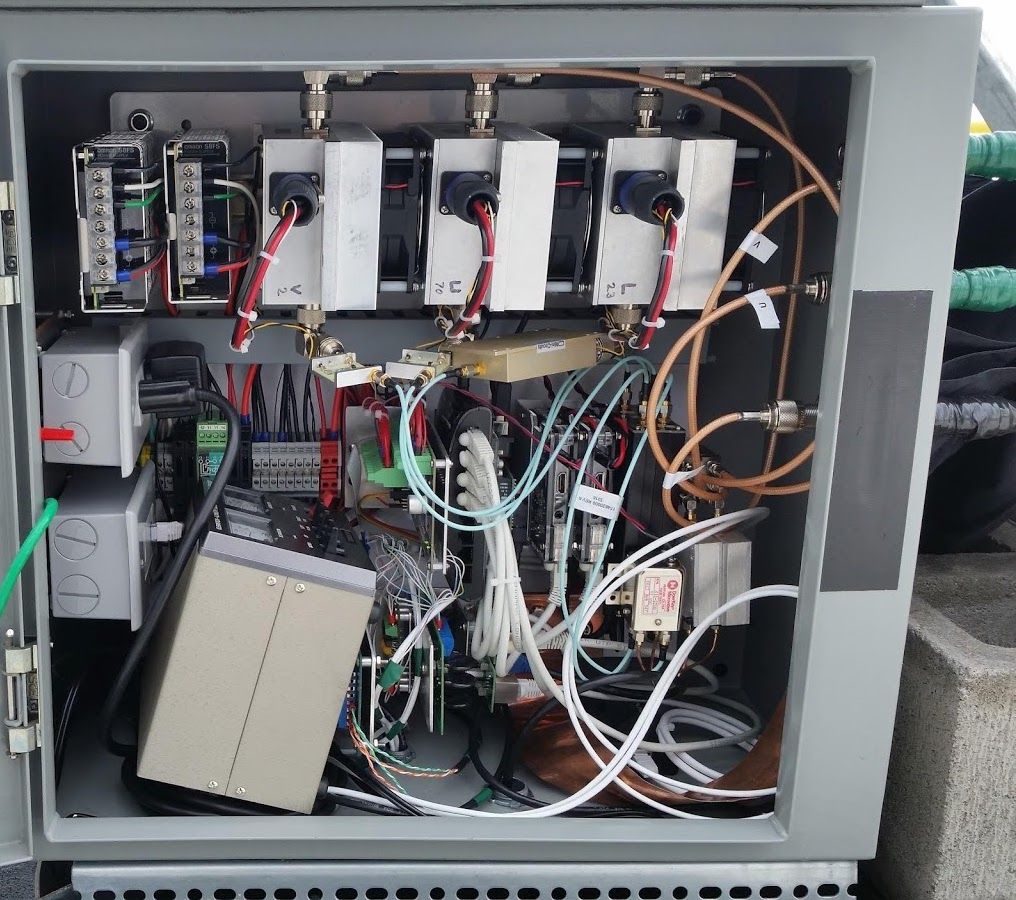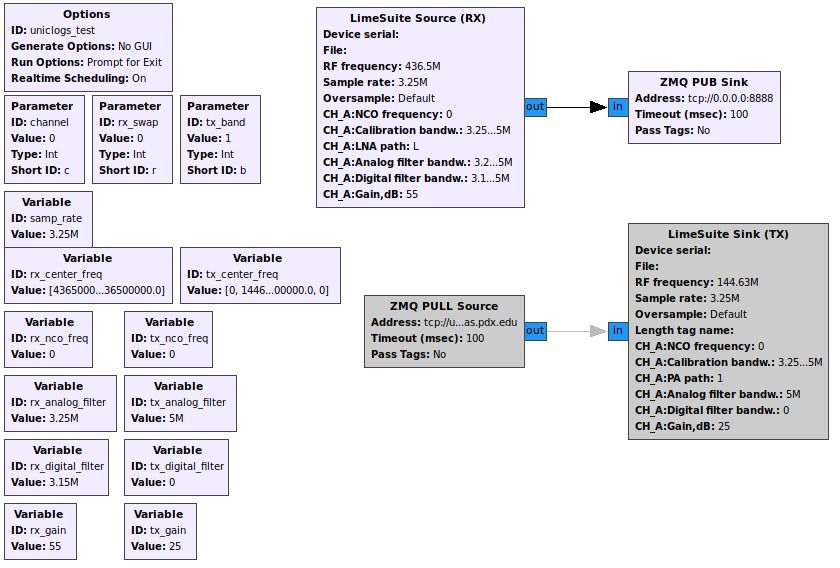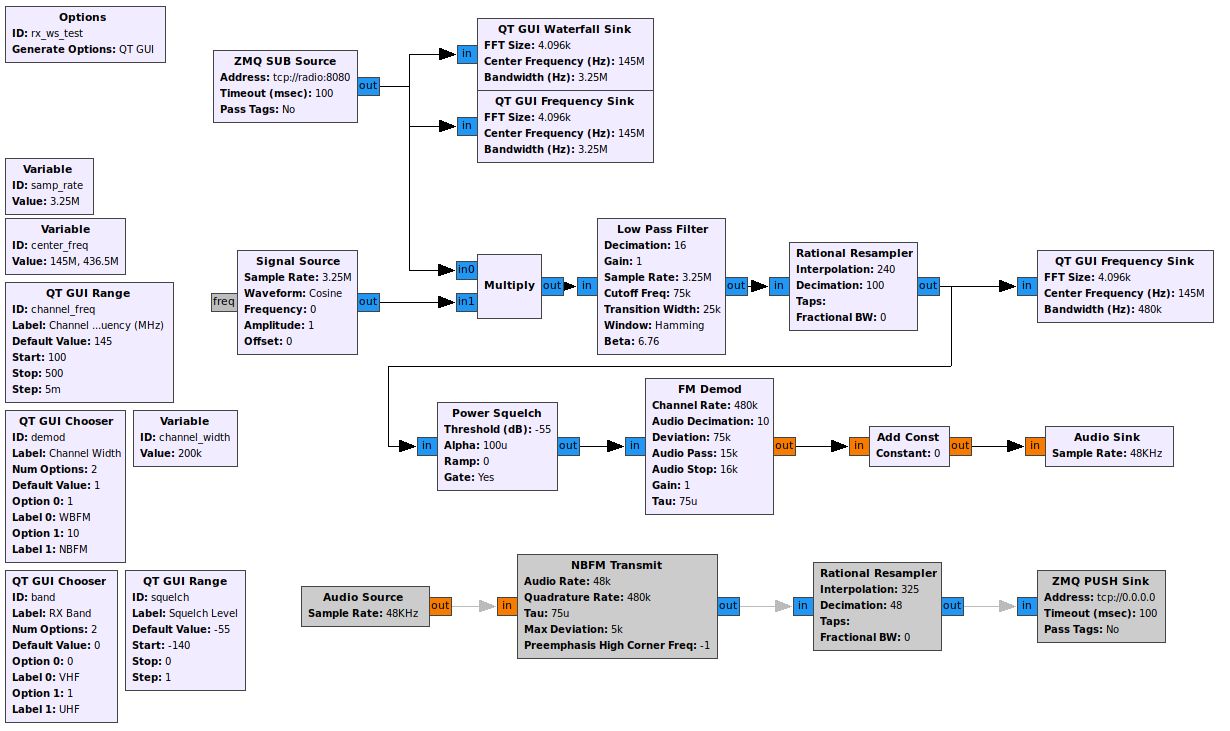Introduction: OreSat, SatNOGS, and UniClOGS
(NOTE: This Field Report is a synopsis of a more detailed report.)
The Portland State Aerospace Society at Portland State University is the lead organization building Oregon’s first satellite, a 2U CubeSat named "OreSat". OreSat was selected as part of the 2017 NASA CubeSat Launch Initiative (CSLI). It’s a completely open source CubeSat with two primary missions: create a "video from space" via amateur, radio-based STEM outreach to Oregon high schools, and develop a multi-camera system for investigating the global distribution of high altitude Cirrus clouds. (More information can be found at https://oresat.org/).
OreSat uses a UHF (436 MHz) transmitter (downlink) and an L band (1.2 GHz) receiver (uplink) radio system. The UHF downlink is in a well used amateur radio band and, like most amateur radio satellites, will beacon every few minutes using morse code (CW) and digital transmissions (G3RUH, which is AX.25 over 9600 bps GFSK). We expect amateur radio operators around the world to receive and decode these CW transmissions. We also expect that dozens of amateur radio operators all around the world will receive our digital transmissions using the Satellite Open Network Ground Station project, or SatNOGS.
SatNOGS is a do-it-yourself, open source, extremely inexpensive and autonomous ground station for tracking and receiving amateur radio satellite transmissions. Hundreds of SatNOGS ground stations have been built and, along with a cloud-based database to coordinate the receives, it has become the de facto ground station network for amateur radio-based satellites.
The SatNOGS network has one major drawback: due to cost and global regulatory concerns, SatNOGS is receive-only. With OreSat on the horizon, the OreSat team decided to create a larger, more rugged, and more capable version of the SatNOGS ground station meant to be operated by a team of licensed amateur radio operators, such as at a university. Thus the University Class Open Ground Station, or UniClOGS, project was created.
UniClOGS is meant to extend the SatNOGS project by adding transmission capabilities. Because each CubeSat and CubeSat program is different, UniClOGS is also built to be extremely flexible by using the high end Myriad RF LimeSDR software defined radio (SDR). The current version of UniClOGS supports:
- Downlink (Satellite to Ground)
- VHF (2 m / 145 MHz)
- UHF (70 cm / 436 MHz)
- Uplink (Ground to Satellite
- VHF (2 m / 145 MHz)
- UHF (70 cm / 436 MHz)
- L band (23 cm / 1265 MHz)
- Amateur radio modes currently supported
- L/u, L/v, U/v, V/u, U/u, and V/v
Like SatNOGS, UniClOGS hardware and software are fully open source. A Git repository with full hardware and software information can be found at http://github.com/oresat.
UniClOGS Top Level Design
UniClogs is divided into four logical blocks:
- RF front end: Including LNAs, PAs, filters, and coax switch matrix
- SDR: Myriad RF LimeSDR providing Three Tx and two Rx paths
- Server: Linux server that runs the mod/demod flow graphs, controls tracking, hosts power control services, hosts dashboard server, and stores IQ data samples
- User Interface: Any PC anywhere (with proper authentication) that runs a COSMOS control panel and client GNURadio flow graphs.
Physically, the system is divided into three discrete pieces:
- Station enclosure
- Server
- User workstation
UniClOGS Detailed Design
The UHF component is centered in the 435 to 438 MHz amateur spacecraft service band and utilizes a circular, polarized, directional Yagi antenna with an RHCP/LHCP polarization sense switch. The VHF component is centered in the 144.30-144.50 and 145.80-146.00 MHz amateur spacecraft service band and utilizes a circular, polarized, directional Yagi antenna with a RHCP/LHCP polarization sense switch. The L-Band component is centered in the 1260 to 1270 MHz amateur spacecraft service band designated for uplink only, and utilizes an RHCP circular, polarized 2x2 helix array.
All of this is mounted on a Yaesu G5500 azimuth/elevation antenna positioner. An RF coax switch connects the UHF antenna to either a low noise amplifier (LNA) for receiving, or a power amplifier (PA) for transmitting. The LNA and PA are then connected to a LimeSDR that provides both UHF and RF input and output signals. The L-Band antenna is directly connected to a PA for transmitting only, and then to the same LimeSDR to provide the L Band RF signal. Figure Four illustrates this system.
The LimeSDR used for VHF, UHF, and L-Band is from LimeMicro, and utilizes GNURadio for modulation and demodulation. The emission type used by OreSat is GFSK at 50 kb/s, and was chosen for the capability of the embedded transceiver on the OreSat spacecraft, an acceptable performance level dictated by the link budget, and somewhat common in the amateur satellite community. However, other emission types are easily possible using GNURadio.
Station Enclosure
All of the components of the UniClOGS station are contained inside of a NEMA-4 electrical enclosure. This enclosure is mounted right below the antenna mast to provide the shortest path to the antenna boom system. The antennas are connected using 1/2" 50 Ohm Heliax Coax Cable (Andrew FSJ4-50B), and pass into the enclosure through protection devices from PolyPhaser. All components are listed in the bill of materials on the GitHub repo.
Testing Flowgraphs
In order to test the software side of our radio subsystem, we used a couple of simple GNURadio Companion flowgraphs, utilizing MyriadRF’s gr-limesdr LimeSuite Source and Sink blocks and ZeroMQ PUB and SUB blocks. The LimeSDR side of the flowgraphs are headless, and simply publish the raw IQ samples to the network. On our workstation we did a simple test by subscribing directly to the radio IQ samples and attempting an FM demodulation on a specified frequency.
Further Information
For those wishing to take a look at UniClOGS, or who wish to implement a similar system themselves, more information is available at our GitHub repos:
Did you do something cool with a Crowd Supply project? Let the world know by submitting your own Field Report!

